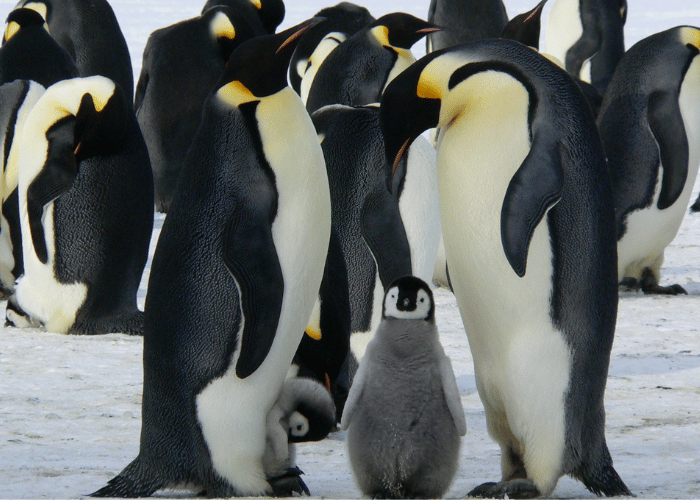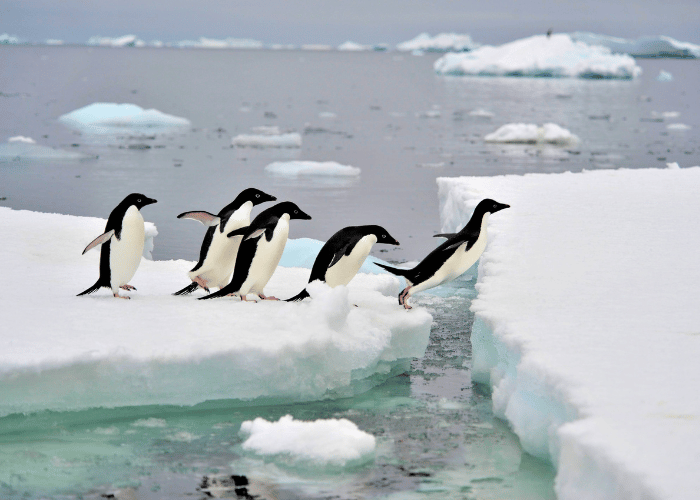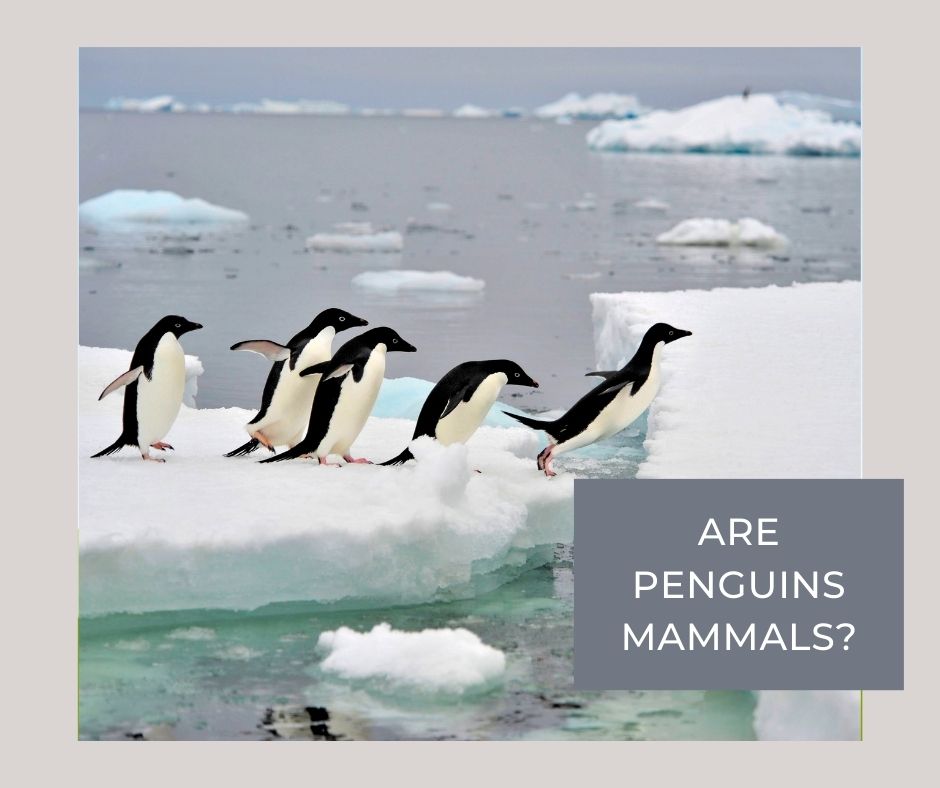Are Penguins Mammals
Table of Contents
Often, you may find yourself pondering some of life’s most seemingly simple yet intriguing queries. Questions such as, “Are penguins mammals?” may cross your mind, producing a tangled weave of confusion and curiosity. After all, these flightless birds share some common features with mammals, and separating fact from fiction can be quite a struggle.
You’re not alone in your quest for clarity. The topic has sparked much debate among the scientific community and ignited interest among animal enthusiasts worldwide. In truth, it’s important to start by understanding what precisely defines a mammal.
An immediate distinction to note is that mammals are warm-blooded vertebrates, characterized primarily by features such as body hair or fur, live birth, and the female’s ability to nurse offspring with milk. And, while penguins possess some of these characteristics, do they appropriately fit within this well-established category of animals? Well, as it turns out, the answer is rather straightforward – Penguins are indeed birds, not mammals. A common misconception that we’ll further unravel as we delve into this compelling subject.

Understanding the Animal Kingdom Classification
Before you can confidently answer the question, “Are penguins mammals?”, you need to have a solid grasp on the Animal Kingdom classification. Let’s take a step back and introduce this crucial concept.
All living organisms on Earth are meticulously categorized according to a system that we call the “Biological Classification.” This scientific system allows us to organize and study the immense diversity, from the smallest bacterium to the largest blue whale. It’s an essential platform of biology.
The Biological Classification is divided into seven major groups called taxa. Here they are, starting from the most broad to the most specific:
- Kingdom
- Phylum
- Class
- Order
- Family
- Genus
- Species
The method of this ordering is such that species fall within a genus, genera (plural form of genus) fall within a family, families cluster within an order, and so on up to the level of kingdom. You’ll find that every single organism on Earth, including you, belongs somewhere in this classification.
Delving into the first, and grandest group, the Kingdom, you’ll find it is subdivided into five main divisions:
- Animalia: animals
- Plantae: plants
- Fungi: mushrooms, yeasts, and molds
- Protista: single-celled organisms
- Monera: bacteria
Now, let’s focus on Kingdom Animalia. We can divide it into two large subgroups: Vertebrates and Invertebrates. Vertebrates have backbones, while invertebrates do not. Penguins, like humans, dogs, and birds, fall within the category of vertebrates.
As you drill down further, within the vertebrates, there are some classes that you may recognize:
- Reptilia: reptiles
- Aves: birds
- Mammalia: mammals
- Amphibia: amphibians
- Pisces: fish
Each of these classes encapsulates a diverse array of species, each with their unique traits and adaptations. Penguins, believe it or not, belong to the class Aves, making them birds.
With a solid understanding of this kind of scientific classification, you’re ready to dive deeper into this fascinating world and answer questions about penguins, and beyond.
Are Penguins Mammals or Birds: The Controversy Explained
Time and again, you’ve likely come across the question, “Are penguins mammals or birds?” To put it simply, penguins are indeed birds. But why does this confusion crop? The confusion lies in their superficial similarities to seals and otters, both of which are mammals.
Let’s delve into this further. Penguins are part of the Aves class, the term used for all bird species. They exhibit features typical of birds, such as beaks, feathers, and the capacity to lay eggs.
- Beaks: Like many other birds, penguins use their beaks not just for eating but also for grooming their feathers and handling their eggs.
- Feathers: Penguins possess a unique kind of feathers that keep them warm in extreme cold. They are also designed to provide buoyancy and decrease friction in water.
- Eggs: Penguins lay eggs, which is a hallmark characteristic of birds.
However, penguins swim and hunt in the water, behaviours more typically associated with aquatic mammals. Their upright position and waddle also mirror that of some mammals, like humans, which may cultivate more confusion.
On the other hand, mammal characteristics include living birth, milk production, and the presence of hair or fur on their body. Penguins don’t exhibit any of these characteristics. So, contrary to some beliefs, they’re unable to be classified as mammals.
Delving into data, there are around 18 species of penguins grouped in the Aves class:
| Penguin Species | Example Locations |
|---|---|
| Emporer Penguin | Antarctica |
| Adélie Penguin | Antarctic coast |
| Blue Penguin | New Zealand |
Thus, penguins fall into the bird category, despite their distinct swimming abilities and upright gait that can sometimes be misleading. It’s pivotal to know that marine habits or body posture do not determine taxonomic classifications. Rather, biological factors such as reproductive strategies, body coverings, and genetic makeup are the key determining factors. Therefore, your query, whether penguins are birds or mammals, is resolved: Penguins are, unequivocally, birds.

Common Traits Between Penguins and Mammals
Just because penguins walk upright and are warm-blooded, you might be inclined to believe that they’re mammals. While it’s understandable to think so, remember that birds like penguins and mammals, although distinct, do share some common characteristics.
One similarity is that both penguins and mammals strive to stay warm. Penguins have a layer of insulating fat like most mammals, and take it a step further with an additional, dense layer of feathers for that extra warmth. They also generate heat internally, a trait known as endothermy, just like mammals.
Parenthood is another area where penguins and mammals cross paths. Penguins take their parenting very seriously. They are known for their paternal care, with both parents sharing the responsibility of incubating eggs. This level of parental care is similar to what you’d see in certain mammals.
Perhaps one of the greatest surprises is the mammal-like method of acquiring food. To obtain food, penguins rely on a high level of intelligence and coordination. This hunting style, full of strategy and teamwork, is often seen in some mammal species as well.
Here’s a brief summary of these key similarities:
| Traits | Penguins | Mammals |
|---|---|---|
| Warm-blooded | Yes | Yes |
| High parental care | Yes | Yes |
| Insulating fat layer | Yes | Yes |
| Strategic food acquisition | Yes | Varies |
Despite these similarities, it’s important to remember that penguins are, in fact, birds. Slight confusions may arise from the shared features, but rest assured, the bird family proudly claims penguins in their fold. It’s in the mixture of amusing similarities and intriguing differences where you’ll find the joy of unraveling Mother Nature’s fascinating biodiversity.
The Distinctive Characteristics of Penguins That Make Them Birds
You might be surprised to learn that despite their unconventional physical features and aquatic lifestyle, penguins are indeed classified as birds. Were you under the impression that they are mammals because of their walking style, or their tuxedo-like appearance? Let’s discuss some important features that unmistakably set them within the avian category.
Feathers and beaks are traits that distinctly align penguins with birds. Penguins possess a unique type of feather that is highly adapted for the marine environment they inhabit. Their feathers are short, overlap each other, and when coupled with a special gland that produces waterproof oil, provide an insulated and waterproof coat. Furthermore, penguins are equipped with a bird’s signature characteristic: a beak. This beak modification is particularly well-suited to their diet of seafood.
Another hint that penguins are birds lies in their bone structure. Their skeletal system reflects the typical avian bone structure, being hollow yet sturdy, which in other birds aids in flight. Penguins don’t fly in the air; nevertheless, these adaptations assist them in ‘flying’ underwater.
Let’s talk about reproduction. Penguins, like other birds, lay eggs. The Emperor penguin in particular lays one egg per breeding cycle, while other species may lay two. The incubation process is shared by both parents, a common feature among many bird species.
| Penguin Characteristic | Comparison to Birds | Comparison to Mammals |
|---|---|---|
| Feathers | Yes | No |
| Beak | Yes | No |
| Bone Structure | Avian | Different |
| Reproduction | Lays Eggs | Gives Birth |
Lastly, just as many birds have adopted a migratory lifestyle, penguins too exhibit a form of migration, although not in the traditional sense of flying long distances. Instead, penguins migrate by swimming extraordinary measures to breed or find food.
Although your original assumption that penguins were mammals is understandable, it’s undeniable once we look at their characteristics that penguins are definitively the most aquatic of birds.
Debunking Common Misconceptions About Penguins
Engulfed by a swirl of misconceptions, are penguins mammals? Your perception might be built around years of skewed information, but it’s time to uncover the reality of this well-loved creature’s biological classification.
Penguins are not mammals, they belong to the order Sphenisciformes and family Spheniscidae. They’re birds that are highly adapted to water life. You might mistake them for mammals due to their flightless nature and fleshy bodies, but rest assured, they’re birds. Their wings, morphed into flippers for swimming, might seem like mammals’ flippers, but it’s a case of convergent evolution – where unrelated species develop similar physical traits due to similar ecological roles and pressures.
Yet another misconception is that all penguins live in extremely cold conditions. It’s valid for certain species such as Emperor or Adélie penguins, which are considered “true Antarctic species”. Nonetheless, the flipside is that you’d find several penguin species dwelling comfortably in warmer climates. For instance, the Galapagos penguin lives near the equator!
A common belief is that penguins only eat fish. While fish indeed forms a significant part of their diet, they also feast on various marine creatures like squid and krill. It’s crucial to note that diet significantly varies across different species.
| Penguin Species | Primary Diet |
|---|---|
| Emperor penguins | Fish |
| Adélie penguins | Krill and fish |
| Chinstrap penguins | Krill |
| King Penguins | Fish and squid |
Penguins are also perceived as lifelong monogamous creatures. Many species are serially monogamous, meaning they’ll have one mate per year, but they often switch partners from year to year. Some species like Emperor penguins do mate for life, but that’s not the rule for all.
Lastly, it’s wrong to assume all penguins are black and white. That’s a recognizable feature of classic penguins like the Emperor, but some species, like the rockhoppers, feature a splash of color on their crests.
- Every penguin is a bird, not a mammal
- Not all penguins live in cold regions
- Penguins eat more than just fish
- Lifelong monogamy isn’t the norm for penguin species
- Penguins aren’t always black and white
This sheds light on the multitude of misconceptions that encapsulate penguins. They’re intriguing creatures with diverse habits and habitats. These facts debunk the more common misconceptions and enhance our understanding of this remarkable species.

Conclusion: A Recap and Final Verdict on Penguins’ Classification
Diving back into a summary of our discussion, we’ll revisit the main points. Penguin’s warm-blooded nature, ability to give birth to live offsring and their possession of fur-like feathers were some of the key areas considered.
- Penguins are undeniably warm-blooded animals. They maintain a constant internal body temperature, notwithstanding the environmental conditions.
- Unlike most birds that lay eggs, penguins give live birth – an attribute that aligns closely with mammals.
- Penguins’ feathers might be misleading but they can be closely compared to fur. However, it’s vital to note that they’re still feathers, not fur, which is a critical characteristic of birds.
Despite these fascinating cross-over traits, official scientific classification confirms that — penguins are indeed birds, not mammals. Their ability to lay eggs, the presence of feathers, avian skeletal structure, and their respiratory system are all fundamental identifiers in bird classification.
Look closer and you’d find that penguins’ adaptive shared attributes with mammals are more about survival in their harsh environments. It’s a testament to the incredible adaptability of nature.
In conclusion, although shared traits may surface, broad scope classification goes beyond the observable overlaps. As such, despite some mammalian characteristics, penguins are, by all tenets of biological taxonomy, categorically birds.






